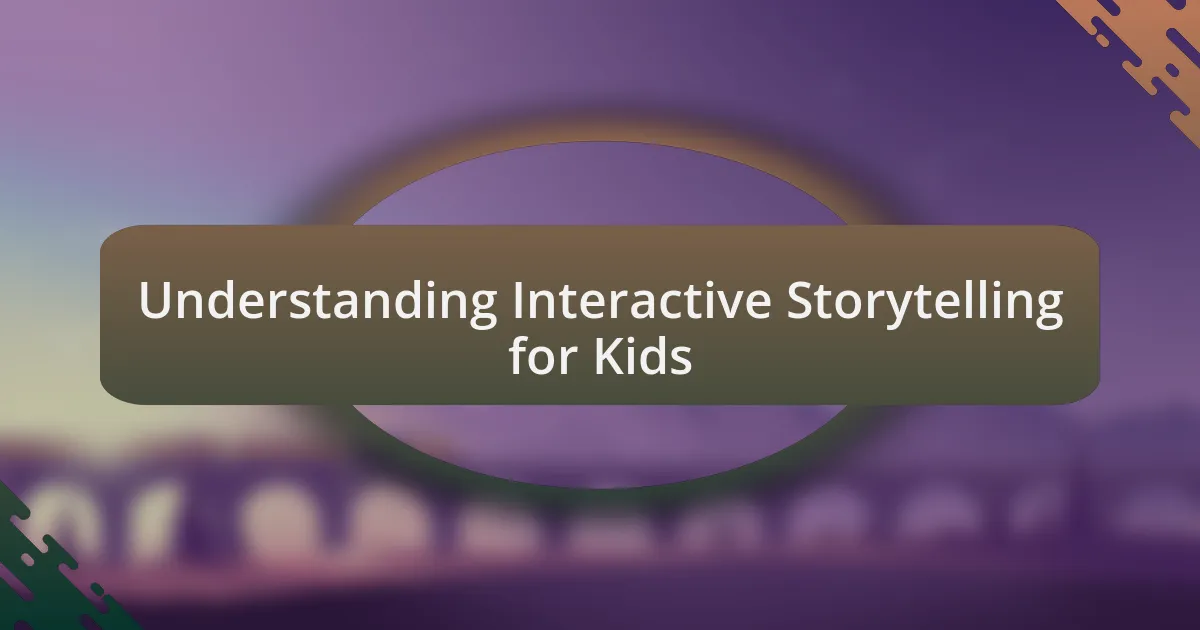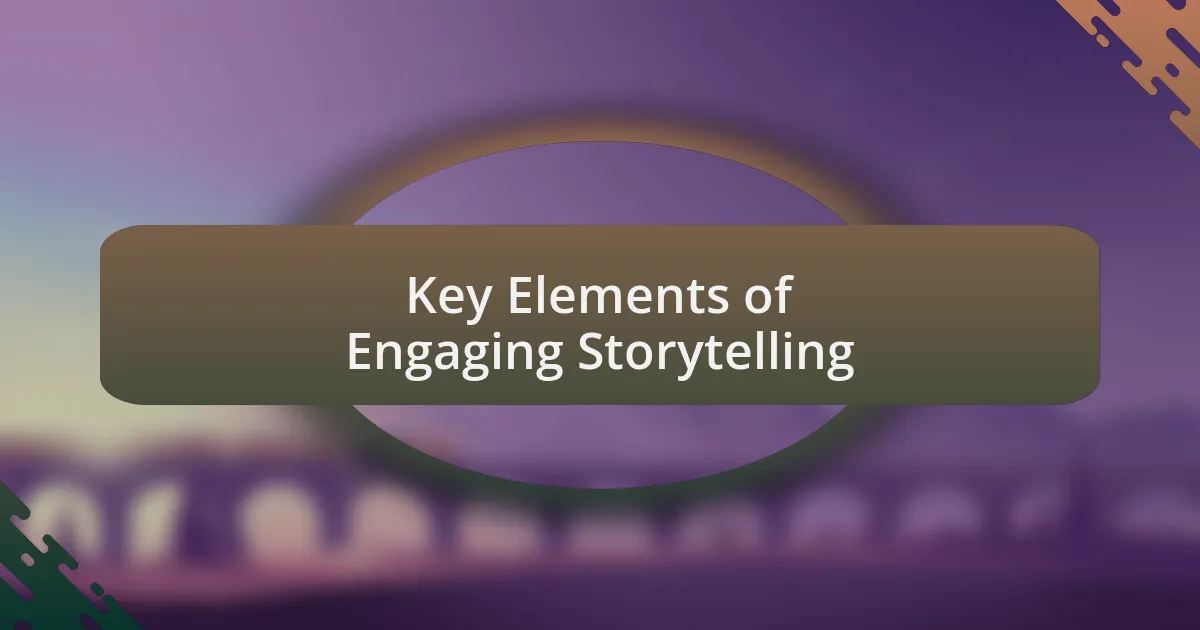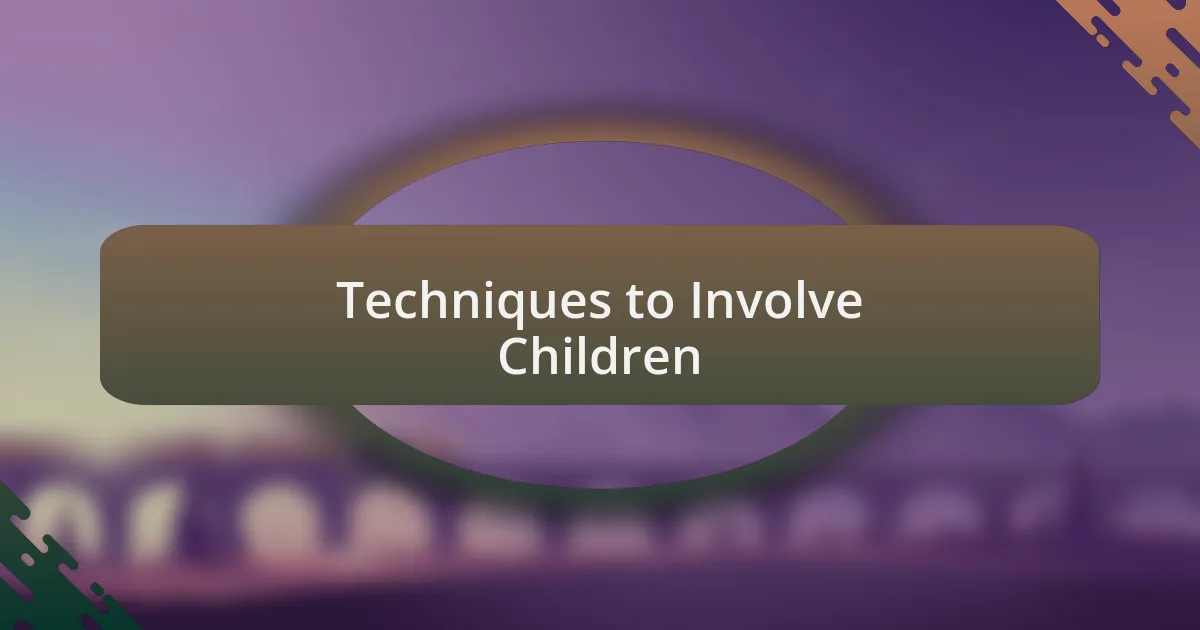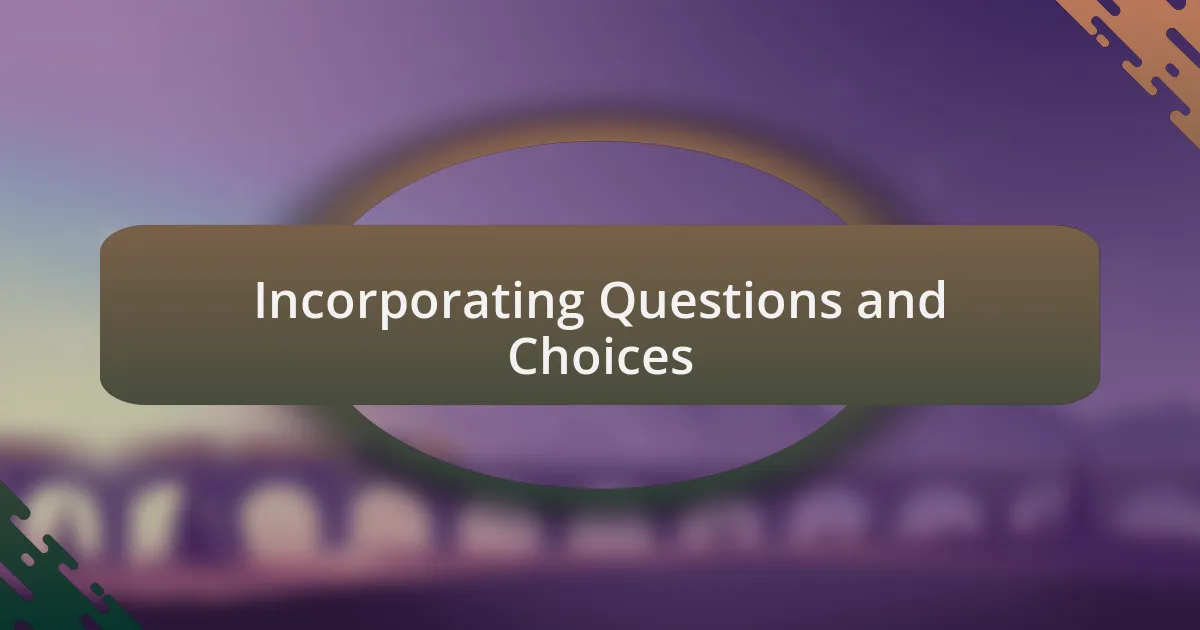Key takeaways:
- Interactive storytelling empowers children by enhancing creativity and critical thinking through active participation and decision-making.
- Engaging storytelling evokes emotions, uses vivid imagery, and includes relatable characters to connect children more deeply with the narrative.
- Incorporating physical actions and visual aids like puppets significantly boosts children’s involvement and engagement with stories.
- Asking questions and providing choices during storytelling fosters a sense of agency, encouraging children to express their ideas and feel their voices matter.

Understanding Interactive Storytelling for Kids
Interactive storytelling for kids is an engaging method that invites young readers to actively participate in the narrative. I remember the joy on my niece’s face when she could choose the hero’s path in a storybook. It made me realize how empowering it can be for children to shape the outcome of their stories.
When kids are involved in storytelling, they not only enhance their creativity but also their critical thinking skills. Have you ever watched a child pause, considering the consequences of their choice? I find it magical how their little minds process options, learning about decision-making in the process. This engagement creates a lasting connection to the material and transforms reading from a passive act into an exciting adventure.
Moreover, interactive storytelling can cater to diverse learning styles, making it a fantastic tool for all kids. I once facilitated a storytelling session where children could act out parts of the story, and it was fascinating to see those who struggled with reading shine when given a chance to express themselves physically. These experiences highlight the importance of tailoring storytelling to meet each child’s unique needs, ensuring that everyone feels included and valued in the process.

Key Elements of Engaging Storytelling
Engaging storytelling hinges on the ability to evoke emotions. I recall a time when I read a poignant story to a group of children, and the room fell silent as they processed the feelings of the characters. It struck me then how powerful it is to create a sense of empathy; children are more likely to engage with stories when they can connect emotionally to what they hear.
Another vital element is the use of vivid imagery and relatable characters. During a recent storytelling workshop, I noticed how excited the kids became when I described a brave little mouse embarking on a grand adventure. Their eyes lit up with every detail, and it reminded me of how much more compelling stories are when children can visualize the world and characters. Isn’t it thrilling to see their imaginations sparked?
Interactive elements, such as asking questions and inviting participation, enhance storytelling significantly. One time, I asked children to suggest what the character should do next, and their enthusiastic responses created an electrifying atmosphere. It dawned on me that this kind of interaction doesn’t just captivate attention—it also fosters a collaborative spirit, making each child feel like they’re a part of the storytelling journey.

Techniques to Involve Children
Incorporating physical actions into storytelling can significantly enhance children’s involvement. I remember one storytelling session where I invited kids to act out the parts of the characters. Watching them leap and dance as I described thrilling escape scenes brought the story to life in a way that mere words never could. Have you ever seen the sheer joy on a child’s face when they are fully immersed in a role?
Another effective technique is incorporating visual aids. I once created simple puppets to represent characters in a story, and the children’s eyes sparkled with curiosity as they waited to see what the puppets would do next. The moment they could handle the puppets themselves, their engagement skyrocketed, and it was clear that they felt a deeper connection to the narrative. Who wouldn’t remember their own playful moments bringing a story to life?
Don’t underestimate the power of stories that allow for choices. During a storytelling session where kids could decide different endings, I was amazed by their excitement as they debated outcomes. It sparked creativity and critical thinking, showing them that stories could be flexible and transformative. Isn’t it fascinating how children feel empowered when they’re given a choice in storytelling?

Incorporating Questions and Choices
Incorporating questions during storytelling can truly ignite a child’s imagination. I often pause mid-narrative to ask, “What do you think will happen next?” The answers I receive are often creative and unpredictable, and I relish the chance to build on their ideas. Have you noticed how kids feel more involved when they realize their thoughts can influence the direction of the story?
Choices, on the other hand, can elevate the experience even further. In one instance, I let the kids choose between two paths for the main character—should she climb the mountain or take the mysterious forest path? Their discussions about the possible outcomes were lively and animated. It was clear that their emotional investment deepened as they discussed the consequences of each choice.
Offering these interactive elements not only enriches the storytelling but also fosters a sense of agency in young listeners. When they see how their input impacts the tale, it teaches them that their voices matter. Have you ever thought about how this empowerment through storytelling can shape a child’s confidence in expressing themselves? It’s a beautiful transformation to witness.